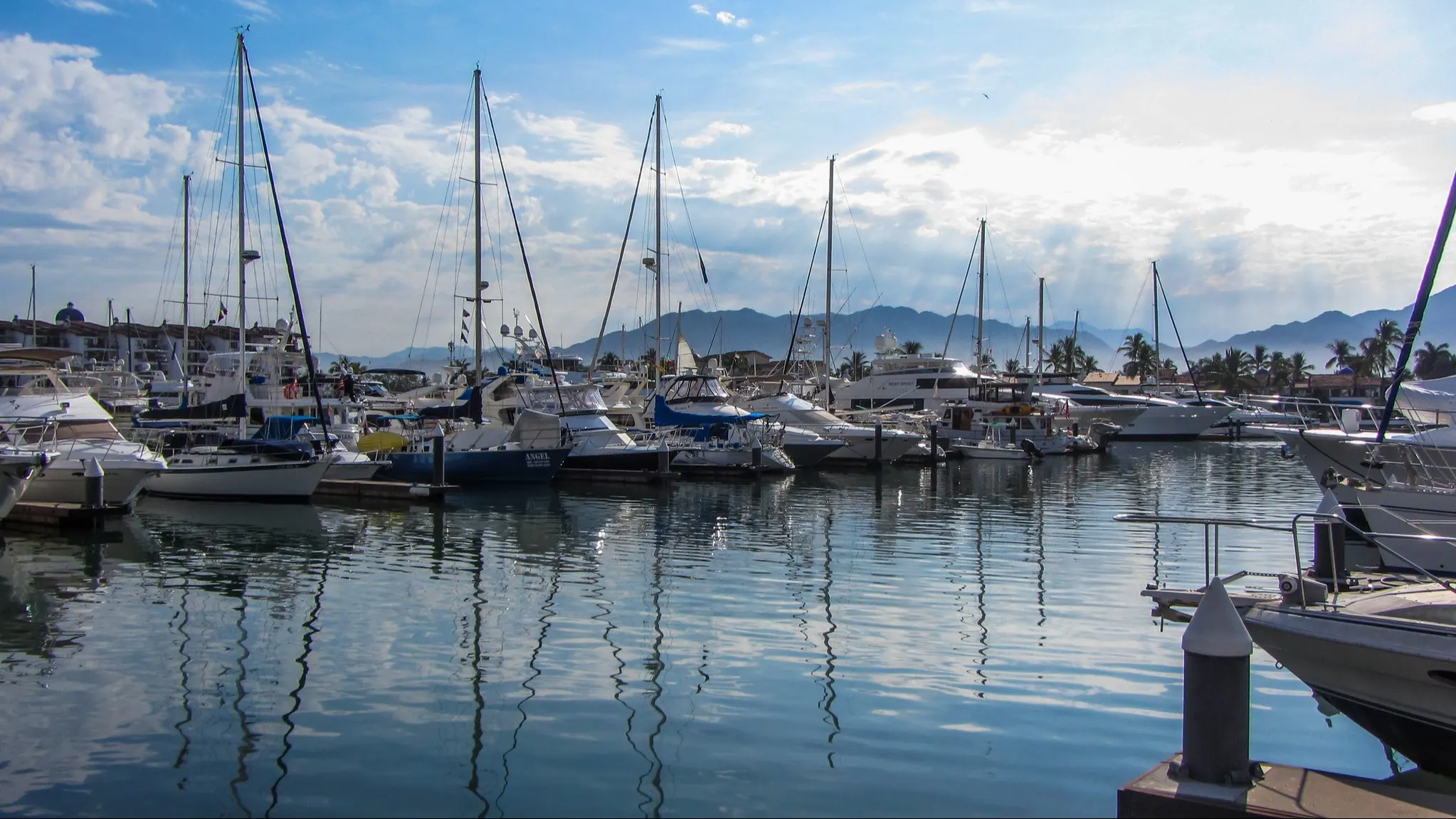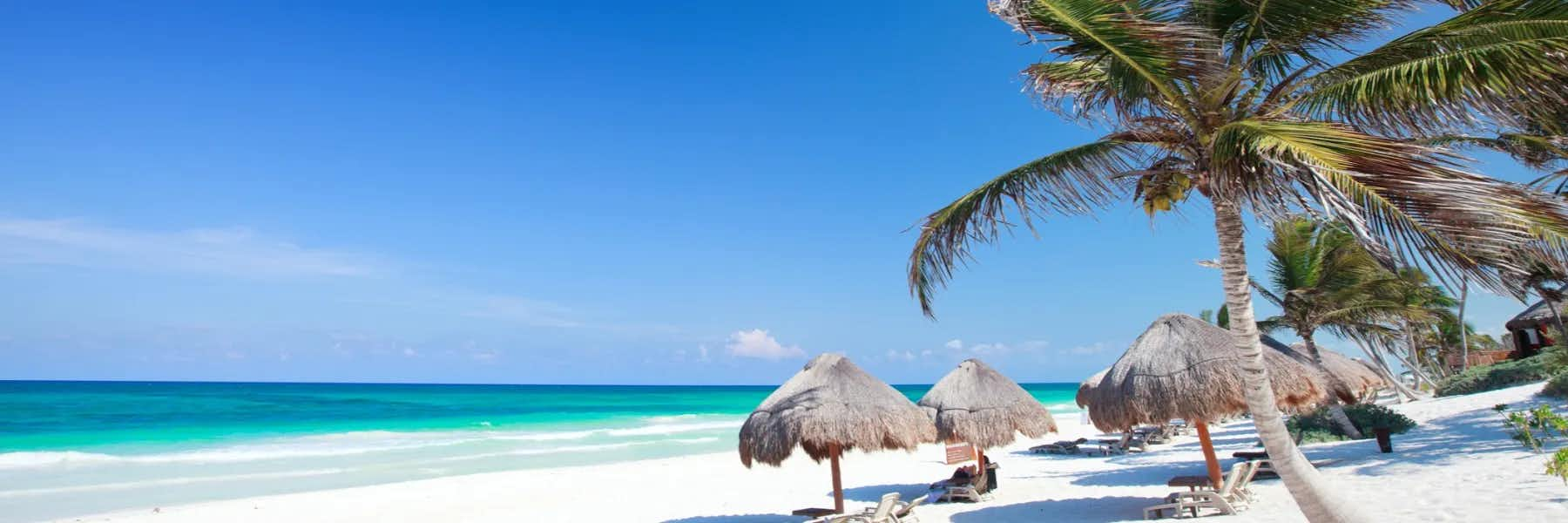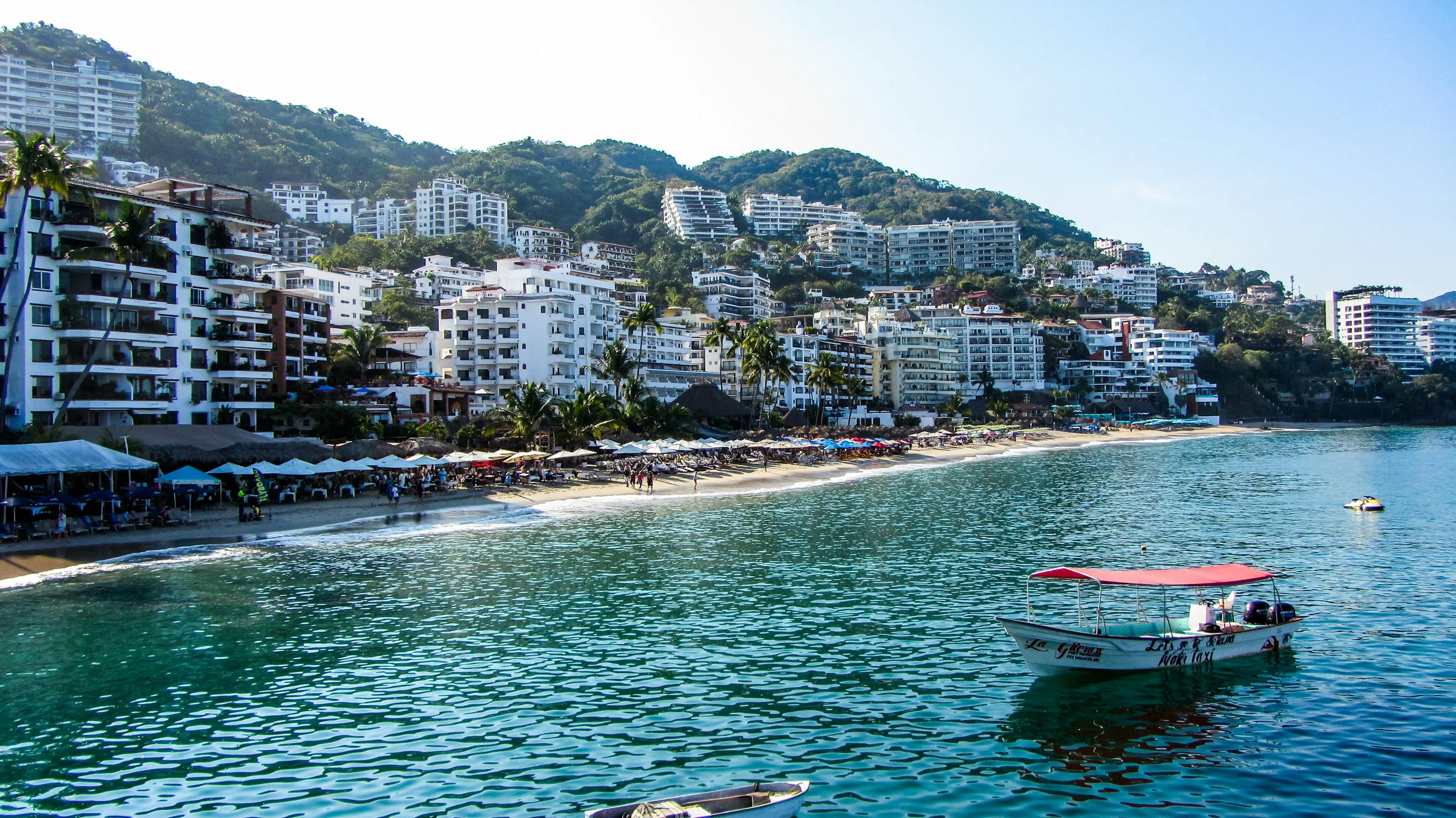More than 2 million expats enjoy the good life in Mexico, and their reasons for doing so are just as diverse as they are. Whatever your reasons, you’ll find the people friendly, the food scrumptious, and plenty of opportunities to make friends with other expats. Mexico is the most popular retirement destination on the planet for U.S. expats.
Initially, many expats come to Mexico to take advantage of the lower cost of living; practically everything costs less than it does in the U.S. or Canada. And Mexico is easily accessible to the States and Canada, too. Good roads and international airports located throughout Mexico mean that family “back home” is never far away.
Hundreds of thousands of foreigners have made their homes near the countless sugar-sand beaches along the Caribbean, the Gulf of Mexico, the Sea of Cortez, and the Pacific Coast, where tropical weather keeps the water warm enough to take a dip whenever the mood strikes. Many others prefer cooler climates; the historic Spanish-colonial towns and cities in the higher elevations offer spring-like weather year-round. The early Spanish settlers left their mark throughout the highlands—stunning Baroque churches and Neoclassical government buildings, lively parks and plazas, and a relaxed lifestyle are available for all.
World-class cities, such as Mexico City and Guadalajara, offer all the culture one could want, including opera, symphony, ballet, and theater, along with a host of art galleries, museums, and universities. Historic colonial cities such as Mérida, Oaxaca, San Miguel de Allende, Santiago de Querétaro, and Guanajuato display their rich heritage through spectacular architecture and their proud indigenous roots.

Culture
Mexico is a multi-faceted, multi-cultural society, with the legacy of the Mayan, Aztec, Zapotec, and other indigenous groups forming its base, merged with more recent customs and practices adopted from centuries of European influence. Many of Mexico’s enduring traditions can be traced to one of these two cultural roots.
As you explore the country, you’ll see this diversity through distinctive regional dialects, varying observances of holidays, a cornucopia of local and traditional culinary specialties, and a mix of architectural styles and influences. Still, you’ll experience a vibrant society and proud people wherever you are.
Because Mexico is so diverse, social norms vary considerably depending on socioeconomic status, gender, ethnicity, rural versus urban differences, religion, and other factors. Even with these differences, though, some similarities are found throughout the country.
One of the most important elements in Mexican society is family. It’s common to see three,or more, generations sharing one residence. The status of the individual is strongly predetermined by the status of their immediate and extended family. Parents and grandparents are given a high degree of respect, as are seniors, regardless of their family ties.
Because of these strong family ties, Mexican weddings can be especially lavish, but celebrating a young woman’s fifteenth birthday—her quinceañera—may be similarly extravagant. Large family fiestas with feasting, live music, and dancing late into the night are common in Mexico, attended by everyone from toddlers to grandparents.
Mexico has been a male-dominated society for many years, but now, with more women working outside the home, the expectation that men should be macho, and women should be submissive, has been slowly on the decline, especially in urban areas. Traditional patriarchal family roles, where the man supports the family financially while the woman raises the children, cooks, and maintains the house, are still prevalent in rural areas.
Young Mexicans generally postpone marriage until they have completed their education and have found stable employment. The average age of marriage is 33 for men and 30 for women—a trend that has been steadily increasing in recent years.
Mexico is not a quiet country. Wherever you are, you’ll probably hear dogs barking, loudspeakers blaring, and fireworks exploding. Most Mexicans don’t make a conscious effort to keep their voices down, and they won’t expect others to do so, either. Restaurants will be noisy, and music blasts into the wee hours from bars and nightclubs. Where there’s noise, there’s life.
Time often moves slowly, even languidly, in Mexico, and the U.S. custom of being prompt is not an expectation here. Time can be quite flexible. If someone says that they’ll see you mañana, it may mean in the morning, tomorrow, or at some undetermined time in the future. It’s acceptable to arrive at a party 30 minutes to two hours late; coming precisely at the designated time could actually be considered rude, as your host probably wouldn’t be ready yet. Exceptions to this would include arriving within half an hour of the designated time for a dinner party, a business appointment, a wedding, a funeral, or a public performance.
It’s customary to bring a small gift when invited to someone’s home for a meal. Flowers are often given, but other gifts could include wine, candies, or cakes, or if your guests have children, you could bring toys.
It’s common to greet everyone you come into contact with, even if you’re just passing them by. Saying ¡buenos días! (good morning, usually said before breakfast) and ¡buenas tardes! (good afternoon, which is said after breakfast but before retiring for the night) is polite and generally expected. If you’re unsure of what to say, a simple buen día (good day) is also acceptable.
It’s also common, and courteous, to offer a greeting when entering a shop, and to engage in some light small talk before conducting any business.
When eating at a restaurant, the server will likely say provecho or buen provecho (equivalent to enjoy your meal, or bon appetit) when delivering your order. That’s the signal that it is time to eat. It’s also common for other diners to say the same to you—and it’s polite when you say it to others when leaving a restaurant, too. ¡Salud! (to your health) is the customary toast when consuming alcoholic beverages.
As a foreigner, discovering Mexico is a delight; you’ll see indigenous people dancing in traditional dress, mariachi bands, unusual parades and processions, and some activities that are as incomprehensible as they are delightful. You can be a spectator or even take part in many of the festivities if you choose. You’ll feel genuinely welcomed by the local people. You can fit in, make local friends, and become a part of your neighborhood and community.
Get Your Free Mexico Report Today!
Get Your Free Mexico Report Today!
Learn more about Mexico and other countries in our daily postcard e-letter. Simply enter your email address below and we’ll send you a free special report – Mexico: The Perfect Close-to-Home Retirement Haven.

By submitting your email address, you will receive a free subscription to IL Postcards and special offers from International Living and our affiliates. You can unsubscribe at any time, and we encourage you to read more about our Privacy Policy.
Language
Although over 50 indigenous languages are spoken in Mexico, the vast majority of the people speak Spanish—in fact, Mexico has the largest number of Spanish speakers on Earth.
Spanish is the official language of Mexico and the language that is taught in schools, but many public and private schools also offer education in English. In urban areas and in places that attract foreigners, finding English speakers will not be a challenge. Even in small towns and rural areas, there will probably be someone who speaks at least a bit of English.
Spanish belongs to the Romance language group which is derived from Latin, the same as English. Because of its similarities, it’s not considered a difficult language for English speakers to learn, and speaking even a little Spanish will greatly enhance your Mexican experience. To learn Spanish or improve your existing skills, schools offering instruction and private tutors are available in most cities and larger towns throughout Mexico. Formal and informal language exchanges are easy to find. Taking online classes is also an option.
Healthcare
If you haven’t traveled to Mexico for medical or dental care, it’s likely that you know someone who has. It’s the world’s most popular medical tourism destination; over 40% of medical and dental tourism trips taken worldwide are to Mexico. In 2019 alone, U.S. residents took 1.2 million trips to Mexico for medical or dental care, taking advantage of the substantially lower costs and often a better patient experience than they could get back home.
Nearly every large town and city in Mexico has at least one first-rate hospital, with all the equipment and technology you would need or expect, and doctors who are well-qualified. Many doctors and dentists in Mexico received at least part of their training in the U.S., and many doctors licensed in the U.S. have received all or part of their training in Mexico.
Mexico has eight hospitals that have received JCI accreditation, in addition to many excellent hospitals that haven’t yet gone through the accreditation process. The JCI hospitals are Galenia Hospital and Hospital Amerimed, both in Cancun, Centro Medico de Cozumel in Cozumel, Hospital BC, and the Obesity Control Center, both in Tijuana, Hospital Médica Sur in Tlalpan, a southern suburb of Mexico City, and the American British Cowdray Medical Center IAP, which has two accredited hospitals in Mexico City.
Other highly-regarded private hospitals with branches throughout the country include Star Médica, Hospital H+, and Hospital Angeles.
Healthcare costs are, generally speaking, at least 50% lower in Mexico compared to the U.S. A dental implant, for example, costs an average of $1,650 in Mexico, compared to $3,400 in the U.S. A coronary artery bypass that would cost $73,000 in the U.S. costs only $27,300 in Mexico. Best of all, Mexico’s healthcare isn’t only less expensive, but it’s an easier system to navigate—no long waits to see a doctor or dentist, results from tests are often given directly to the patient the same day, and most medications are sold over the counter, with made-in-Mexico drugs costing less than half the price of their U.S. equivalents.
Mexico’s national healthcare system consists of two primary paths. The IMSS system (Instituto Mexicano del Seguro Social) is part of the national Social Security process and was designed for employees across the country. Employees and employers make mandated contributions to the IMSS plan every month, and those funds are augmented by funds from the federal government.
Expats who are either legal temporary or permanent residents can apply for the IMSS program under its voluntary participation process. You may begin your application online or by visiting a local IMSS office in your community. Be prepared to negotiate this process in Spanish; you can bring an interpreter with you.
Participation costs depend on age. For those aged 50 to 59, IMSS currently costs about $61 per month per person. For people 60 to 69, it is $85 per month, for 70 to 79 it is $88 per month, and 80+ pays $91 per month. Nearly all treatment, including medications, is provided at no cost once you’ve paid your premium.
IMSS excludes many pre-existing conditions which might prevent you from participating in the program. Fortunately, there’s another option— the Instituto del Salud para el Bienestar, or INSABI program. INSABI, which is free, was established to provide for those with pre-existing conditions and those who are not able to participate in the IMSS program for financial reasons, thereby ensuring medical coverage for all legal residents.
INSABI is an entirely different system from IMSS and has its own set of rules and procedures, as well as its own clinics and participating hospitals throughout Mexico. INSABI accepts anyone who is not enrolled in IMSS, and includes care for the unemployed and chronically ill. As is the case with IMSS, expats who hold either permanent or temporary residency may seek treatment.
Receiving care under the INSABI plan doesn’t require signing up for it in advance; just show up at any INSABI hospital and present your residence card, your CURP (a unique number that the Mexican government gives to all citizens and legal residents), and a compromante (a utility bill or other proof of your address in Mexico).
Having private insurance is also an option. This allows you to go to the hospital of your choice—and Mexico has some excellent private hospitals. Keep in mind, though, if your private insurance is based out of the U.S. or some other country, your benefits may be limited. The same is true for Medicare and Medicare Advantage policies.
Community
The 2 million-plus expats who live in Mexico are scattered throughout the country. You’ll find sizeable expat havens on the Caribbean side, including the Riviera Maya—Playa del Carmen, Tulum, and Cozumel—and in Mérida. Puerto Vallarta, Puerto Escondido, and Mazatlán are on the Pacific coast. Lake Chapala, Ajijic, San Miguel de Allende, Santiago de Querétaro, Guanajuato, Oaxaca de Juárez, Mexico City, and San Cristóbal de Las Casas are in the highlands, and La Paz, Ensenada, San Felipe, and Cabo San Lucas are on the Baja Peninsula.
Many of the communities where expats live have English libraries, community centers, and other organized resources for their foreign residents. There’s even an American Legion in Lake Chapala. All expat communities have Facebook pages that will include social and cultural events that foreigners may want to attend. Vounteering is also a great way to immerse yourself in the local community, and opportunities are frequently posted on these sites.
Major holidays include Independence Day on September 15th and 16th, the Day of the Dead festivals held throughout the country on November 1st and 2nd, and the Christmas season, which runs from December 16th through Epiphany on the 6th of January.
Work and Business
Many foreigners who live in Mexico are either employed by Mexican companies or their U.S. branch offices, or own their own businesses. Many others live in Mexico and work remotely. Areas with large communities of working expatriates include Mexico City, Guadalajara, Santiago de Querétaro, Oaxaca de Juárez, Tijuana, and Mérida.
Since Mexico is a signatory to the U.S. Mexico Canada Agreement (USMCA), tariffs between Mexico, the U.S., and Canada are eliminated for all products that meet rules of origin requirements under the Agreement.
Foreigners can own 100% of a Mexican business; Mexico’s legal and tax systems don’t discriminate between foreign and Mexican-owned businesses.
It’s important to have an attorney assist with the legal ins-and-outs of starting a business in Mexico. You’ll need to comply with taxes, zoning and building permits, labor laws, and environmental regulations. The options for starting a business are similar to those in the U.S. and Canada, with options for a Public Limited Company, Limited Liability Company, Sole Trader, Professional Service, and nonprofit charities and organizations.
Wages are comparatively lower in Mexico than in the U.S. or Canada; the average worker earns about $600 per month. Employers still need to pay into the Social Security system and IMSS, and provide other benefits and security for their workers.
Mexico is a large and diverse canvas that cannot be painted with one brush. If you’re ready to embrace a new, adventurous life and put in a bit of work into learning some Spanish, life in Mexico can be wonderful. Our correspondents have often found that the magical combination of tequila and guacamole can be of great assistance when learning to speak Spanish.
MexLaw is an excellent website with lots of information about starting a business, real estate law, and anything having to do with immigration.
Relocation specialists can be a great help to anyone making a move to Mexico. Most large towns and cities have at least one person who can assist with finding housing, immigration issues, such as residency and changes of address, and with translation. A few reputable ones are Sonia Diaz (email: Sonia@SoniaDiazMexico.com), who serves San Miguel de Allende and the Puerto Vallarta / Riviera Nayarit region, Casey Leonard at Yucatán Transitional Services (email: Casey@mexicotransitionalservices.com), who serves Mérida and the Yucatán Peninsula, and Liz and Romy at MyPlaceAtQueretaro (email: myplaceatqueretaro@gmail.com).
For more information about living in Mexico, subscribe to International Living Magazine. You’ll receive all the latest information and expert tips about every aspect of life in Mexico. You can also access more information about Mexico on International Living’s website pages here.
Get Your Free Mexico Report Today!
Get Your Free Mexico Report Today!
Learn more about Mexico and other countries in our daily postcard e-letter. Simply enter your email address below and we’ll send you a free special report – Mexico: The Perfect Close-to-Home Retirement Haven.

By submitting your email address, you will receive a free subscription to IL Postcards and special offers from International Living and our affiliates. You can unsubscribe at any time, and we encourage you to read more about our Privacy Policy.














